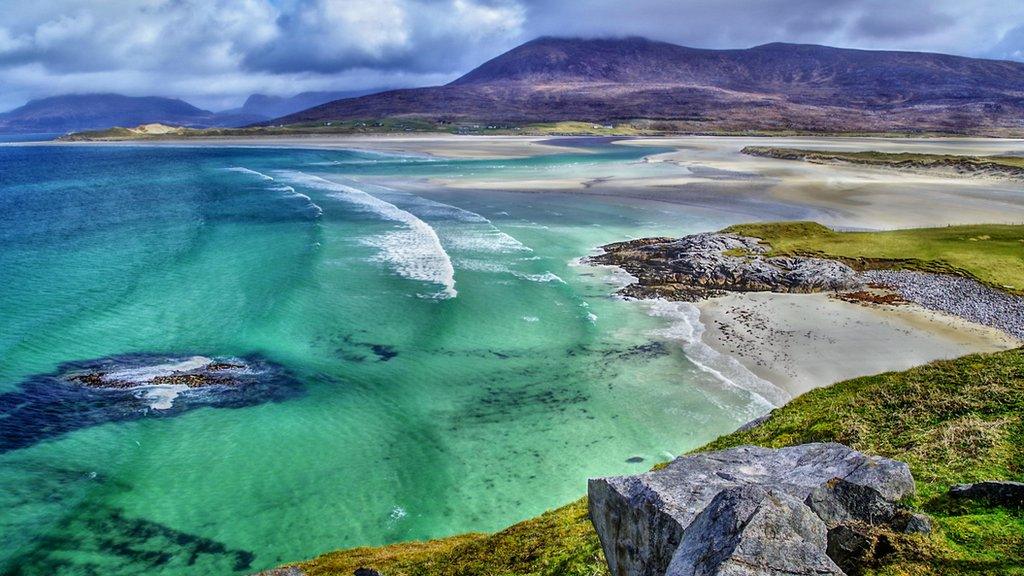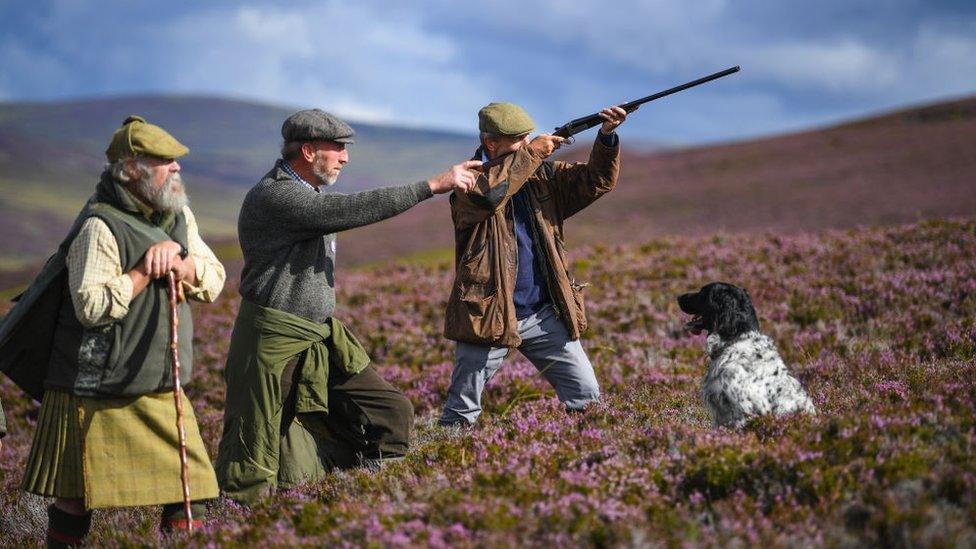How war was followed by land raids in Scotland
- Published

One hundred years ago a landmark piece of legislation was introduced in response to land raids by frustrated and disillusioned soldiers and sailors after World War One.
When the war ended, many soldiers and sailors from the Highlands and Islands returned home believing they had been promised land as a reward for their service on the frontline.
They had expected to use the land to build homes, grow crops and raise livestock to feed their families.
But when they found this was not available to them as promised, they carried out raids to take control of areas of large estates.
Gress in the Isle of Lewis was the scene of one of these land raids 100 years ago.
Islander Donald Graham's grandfather was among the leading raiders. They were not armed with weapons but potatoes which they planted on property belonging to landowner Lord Leverhulme.
"I feel proud of my grandfather," Mr Graham said.
"I can feel the strength of character and the force of will to do what they did, it shows a very brave man.
"It wasn't an easy thing back in those days to challenge authority. They did and you can see the outcome today of what they went through and what they did."
'Ultimate sacrifice'
Dr Iain Robertson, of the University of the Highlands and Islands' Centre for History, said there were similar land protests from Highland Perthshire up to the north of Scotland and out to the Western Isles.
"Folks had been away between 1914 and 1918. They had made the ultimate sacrifice and then came back to find their families in exactly the same social and economic conditions that they had left them four years previously," he said.
"Prime Minister David Lloyd George had allegedly promised them four acres and a cow to create a land fit for heroes."
Next week, the University of the Highlands and Islands will hold a conference , externalto mark the passing of the 1919 Land Settlement (Scotland) Act.

The 1919 Act gave the government power to buy land for new crofts
The legislation was in response to the land raids and it gave the government power to buy land and then divide it up into crofts and smallholdings.
Historian Prof Jim Hunter described it as a "radical measure".
"Even today it would be regarded as extremely radical," he said.
"It gave the Board of Agriculture, the government agency, the power not just to acquire land compulsory but also to force and oblige landowners to install on land still in their ownership smallholding tenants."
Prof Hunter said the legislation was "hugely liberating" for many families.
"On Lewis, for instance, there was huge demand for crofts and you get this really strong sense of people looking over the fence or dyke at all this land with nothing happening on it," he said.
'Empty glens'
Hamish Trench, head of the Scottish Land Commission, said the act was a "very direct" intervention by the government at the time.
"They recognised what the problem was and they knew they needed to find more land for housing and livelihoods," he said.
"They simply went about it the simplest way they could find to right it."
Dr Hunter said the aims of the 100-year-old legislation was still relevant today.
"There is again talk of rural repopulation, of putting people back in the 'empty glens' of the Highlands and Islands, and I think what is often forgotten is that this has been done already on a very wide scale and this is the significance of the act," he said.
Some people believe land reform in modern Scotland may not have been possible without the 1919 act.
Dr Robertson said the legislation encouraged people to stay in the Highlands, creating a population base.
"Although you cannot directly map it, I firmly believe that out of that population base comes the conditions for the community land buyout movement some 80 years later," he added.
"That is the connection, that is why the 1919 act is so important. It creates these conditions for community land buyout, which we all know is transforming the Highlands this very day."
- Published18 September 2019

- Published21 May 2019
